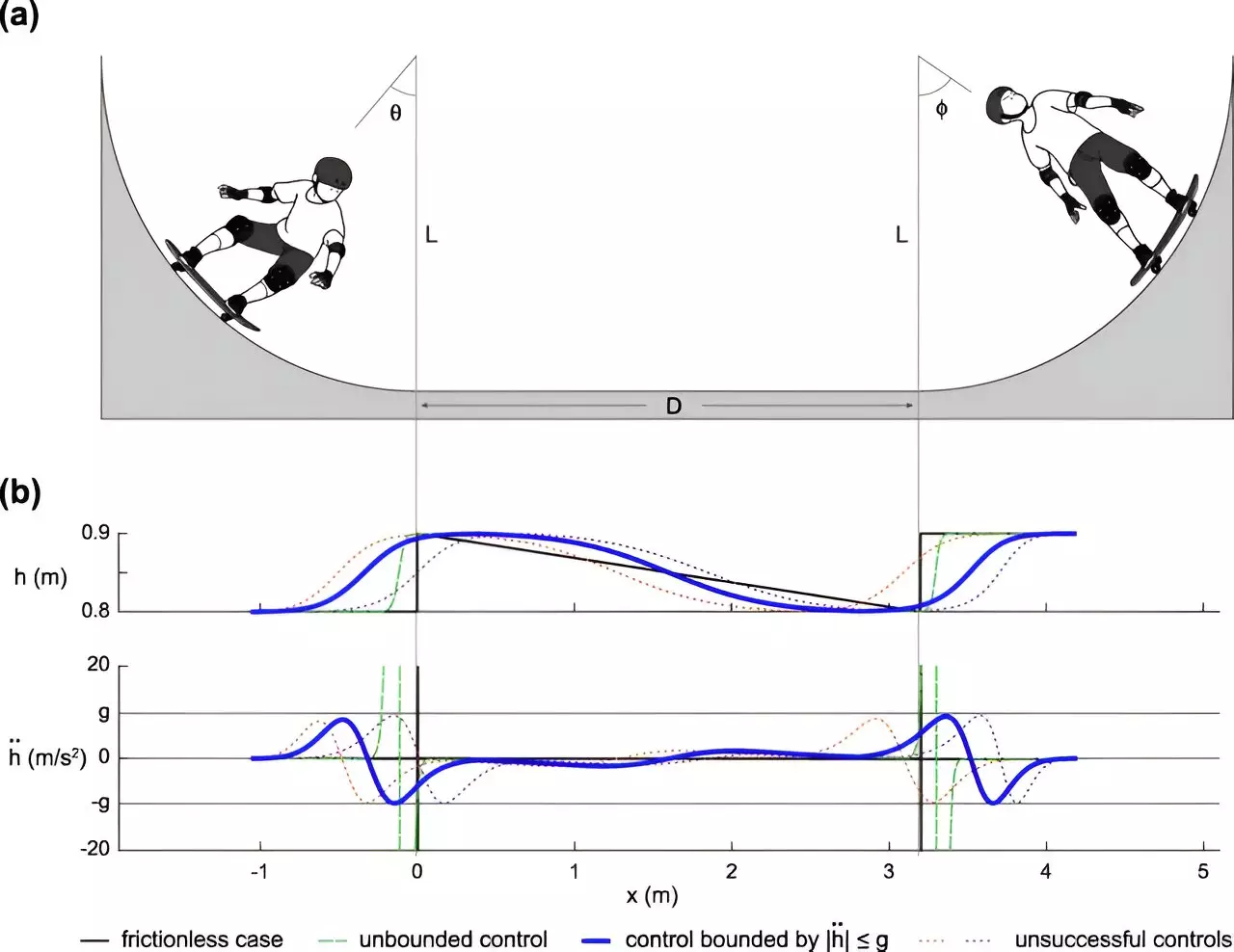A remarkable synergy between engineering and athletic performance is showcased through the collaborative efforts of a team of researchers from ETH Zürich and institutions in Japan, including The Institute of Statistical Mathematics and ATR Institute International. Their groundbreaking work in modeling the complex physical interactions of humans navigating skateboards in a half-pipe has not only provided critical insights into the sport but also opened doors to practical applications in robotics and kinetic studies. By applying principles of physics to sport, the researchers have created a platform that extends beyond skateboarding, hinting at broader implications for understanding motion in various contexts.
An innovative analogy drawn from the simple act of swinging was employed as a foundational element for their research. The dynamics of a swing, where momentum and gravitational forces play crucial roles, parallel the actions of a skateboarder propelling themselves on a half-pipe. In both scenarios, there exists a rhythmic interaction with gravitational forces that governs motion. This approach is not merely academic; it simplifies the complex realities of skateboarding into a more manageable model, leveraging an already understood mechanical system to derive insights that can be mapped onto more intricate behaviors of skaters.
A skating half-pipe is designed to facilitate an array of tricks and maneuvers while mimicking a hollow pipe split longitudinally. Skaters use these structured valleys for rolling, leaping, and demonstrating dexterity. The foundational physics of this apparatus lies in the conservation of energy—where potential energy at the peak of the ramp transitions into kinetic energy as the skater descends. The intricacies of movement within such a structure are profound; simply rolling from one side to the other requires skillful manipulation of body dynamics to build momentum and heighten performance.
Central to the study is the concept of “pumping,” a technique where skaters utilize their body weight and movements to enhance their speed on the ramp. By crouching low in the valley and arching their bodies as they ascend, skaters are able to optimize their trajectory and velocity—an elegant dance of physics in action. This technique, akin to how children operate swings, showcases the interconnected nature of physics in sport and recreation. The research team meticulously observed this maneuver to decipher the optimal methods skaters employ, revealing that even the smallest adjustments in body position can lead to significant changes in performance.
Assembling their model was no small feat; it required blending existing physics frameworks regarding swings and pendulums with real-world skateboarding scenarios. The researchers meticulously analyzed video footage of skateboarders and translated the observed techniques into quantifiable data, such as mass modulation and board angles during various maneuvers. This hybrid approach not only bolstered the reliability of their model but also underscored the complexity of human motion on a moving skateboard.
Although their optimal pumping model was theoretically sound, the researchers acknowledged its limitations in real-world applications. Pushing skaters beyond the bounds of the half-pipe would lead to disastrous results, yet the implications of their findings extend well beyond recreational sport. The computational model offers insights that could significantly benefit robots or machines tasked with maintaining balance on uneven terrains. By mimicking the human dynamic observed in skateboarding, robots could learn to traverse challenging landscapes more adeptly, paving the way for advancements in robotics and AI.
The study conducted by the ETH Zürich team represents a fascinating intersection of engineering, physics, and athleticism. By demystifying the physical principles at play when a skater pumps on a half-pipe, they have offered new understandings that transcend the sport itself. Their research highlights the intricate dance between physical forces and human capability, serving not only to enhance the skateboarding experience but also to inspire innovations in fields as varied as robotics and biomechanics. As we continue to explore the physics of human motion, we uncover richer layers of knowledge that inform both scientific inquiry and practical applications in everyday life.

